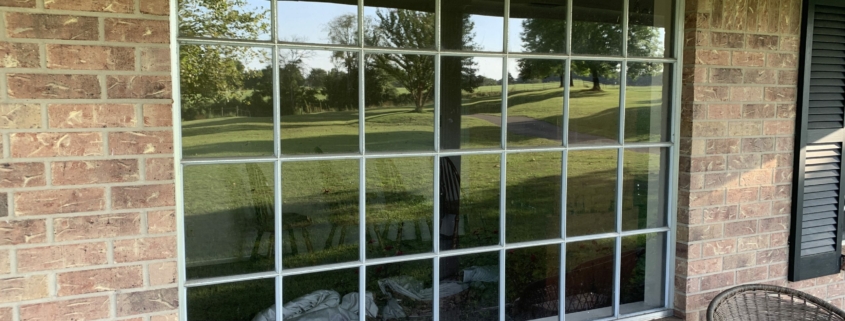What Causes Condensation Inside Windows?
Condensation is a common issue that many homeowners face, especially during colder months. When moisture forms inside your windows, it can be frustrating and potentially damaging to your home. Understanding the causes of window condensation is essential in preventing and managing this problem effectively.
Understanding the Science of Condensation
Condensation occurs when warm air comes into contact with a cold surface, such as a window pane. The warmer air holds more moisture, but as it cools down, it cannot retain all the moisture and releases it as water droplets. This process is due to the difference in temperature between the inside and outside of your home.
Condensation is a fascinating phenomenon that can be observed in various situations. It is not limited to just windows; it can also occur on mirrors, metal surfaces, and plants. Understanding the science behind condensation can help you manage and prevent it effectively.
The Role of Temperature in Condensation
The temperature plays a significant role in the formation of condensation. When your indoor air is warmer than the outdoor air, the warm air hits the cooler window, causing the moisture to turn into water droplets. This temperature difference creates a perfect environment for condensation to occur.
It’s important to note that the temperature of the surface also affects condensation. Cold surfaces, such as single-pane windows or poorly insulated walls, are more prone to condensation. These surfaces provide a cooler area for the warm air to come into contact with, resulting in the formation of water droplets.
Humidity and Its Impact on Condensation
In addition to temperature, humidity levels also contribute to condensation. High humidity levels mean a significant amount of moisture in the air, increasing the likelihood of condensation. Factors such as cooking, showering, and drying clothes indoors can raise humidity levels and lead to condensation.
Understanding the relationship between humidity and condensation is crucial for managing indoor moisture levels. By controlling humidity through proper ventilation and using dehumidifiers, you can reduce the chances of condensation in your home.
It’s worth noting that external factors, such as weather conditions, can also influence condensation. During cold winters, condensation becomes more prevalent when the temperature outside drops significantly. The stark contrast between the warm indoor air and the frigid outdoor air creates the perfect conditions for condensation to form.
Moreover, condensation can have various effects on your home and daily life. Excessive condensation can lead to mold growth, which can harm your health. It can also cause damage to your windowsills, walls, and other surfaces if left unaddressed.
Preventing condensation requires a multi-faceted approach that involves managing temperature and humidity levels. Proper insulation, double-glazed windows, and adequate ventilation systems can all help reduce condensation and maintain a comfortable and healthy indoor environment.
Common Causes of Window Condensation
Condensation on windows can be a frustrating issue for homeowners. It obstructs the view and can lead to mold and mildew growth if left unchecked. Understanding the causes of window condensation is crucial in finding effective solutions. Let’s explore some common factors that contribute to this problem.
Poor Ventilation and Its Effects
One of the primary causes of condensation is poor ventilation. When there is insufficient airflow in your home, moisture produced inside cannot escape, leading to condensation on windows. This is especially true in areas with high humidity, such as bathrooms and kitchens. The lack of proper ventilation exacerbates the problem, making it difficult for the excess moisture to dissipate.
To combat this issue, it is essential to improve ventilation. Installing exhaust fans in moisture-prone areas like bathrooms and kitchens can help remove excess humidity from the air. Opening windows and using air vents can also facilitate better airflow, allowing moisture to escape and reducing the likelihood of condensation on windows.
The Influence of External Weather Conditions
External weather conditions, particularly during colder months, can significantly contribute to window condensation. When the outside temperature drops, the temperature difference between the inside and outside air increases. This temperature disparity causes the warm indoor air to come into contact with the cold glass surface, resulting in condensation.
Moreover, factors such as rain or high humidity outside can further intensify condensation levels. Rainwater can seep into window frames, exacerbating moisture-related issues. High humidity levels in the surrounding environment increase the moisture content in the air, making it more prone to condensing on windows.
Preventing condensation caused by external weather conditions requires a multi-faceted approach. Ensuring proper insulation around windows can help minimize the temperature difference between indoor and outdoor air, reducing the likelihood of condensation. Regularly inspecting and maintaining window frames to prevent water infiltration is also crucial in preventing moisture-related problems.
Additionally, controlling indoor humidity levels can significantly mitigate condensation caused by external weather conditions. Dehumidifiers or air conditioners can help remove excess moisture from the air, reducing the overall humidity levels inside your home.
In conclusion, condensation on windows can be caused by various factors, including poor ventilation and external weather conditions. By understanding these causes and implementing appropriate measures, homeowners can effectively combat window condensation, ensuring a comfortable and moisture-free living environment.
The Different Types of Window Condensation
There are two main types of window condensation: interior and exterior. Understanding the differences between the two can help identify their causes and implement the appropriate solutions.
Interior Condensation: Causes and Consequences
Interior condensation occurs when moisture accumulates on the inner surface of your windows. This type of condensation is often a result of excessive indoor humidity levels, poor ventilation, or inadequate insulation. If left unchecked, interior condensation can lead to mold growth, damage to window frames, and even affect the air quality inside your home.
Exterior Condensation: Causes and Consequences
Exterior condensation, on the other hand, appears outside your windows. It typically occurs when the window surface is much colder than the surrounding air. While exterior condensation does not pose immediate concerns, it can indicate poor insulation or low-quality windows, which may need further attention.
How to Prevent and Manage Window Condensation
Preventing and managing window condensation involves a combination of measures to control temperature humidity, and improve ventilation.
Improving Ventilation in Your Home
Enhancing ventilation is crucial in reducing condensation. Ensure your home has proper airflow by using exhaust fans in kitchens and bathrooms, periodically opening windows, or installing air vents. This will allow moisture to escape, minimizing the chances of condensation.
The Role of Dehumidifiers in Controlling Condensation
Dehumidifiers are useful devices that can significantly reduce excess moisture in your home. These appliances extract moisture from the air, maintaining an optimal humidity level and reducing the likelihood of condensation. For optimal results, place dehumidifiers in areas prone to high humidity, such as basements or laundry rooms.
The Potential Damage from Unchecked Condensation
Ignoring window condensation can lead to more severe problems that can affect your health and your home’s structural integrity.
Mold Growth and Health Risks
Excessive condensation provides a breeding ground for mold growth, adversely affecting your health. Mold spores can cause respiratory issues, allergic reactions, and worsen conditions such as asthma or allergies. Timely mitigation of condensation can prevent mold growth and the associated health risks.
Structural Damage to Your Home
If condensation accumulates over time, it can damage your window frames, walls, and nearby structures. Continuous exposure to moisture can weaken materials, leading to rot, warping, or even structural instability. Promptly addressing condensation can help protect your home and preserve its structural integrity.
In closing
Understanding the causes of condensation inside windows is crucial in managing and preventing this common issue. By addressing factors such as temperature, humidity, and ventilation, you can reduce the likelihood of condensation and protect your home and health from its potential consequences.
Window Depot USA of Tyler, TX, combines premium grade replacement window products with factory-direct pricing, a Transferable Lifetime Limited Warranty, and professional, courteous installation to offer the very best value in the industry today! Call us at (903) 752-0449 for a free, no-obligation quote, and find out firsthand what sets Window Depot of Tyler, TX, apart from the rest of the crowd. We’d be honored by the opportunity to earn your business!
Our service area includes the following towns: Tyler, Whitehouse, Bullard, Lindale, Chandler, Canton, Mineola, Longview, Kilgore, Henderson, Gilmer, Gladewater, Marshall, Hallsville, and Palestine.









